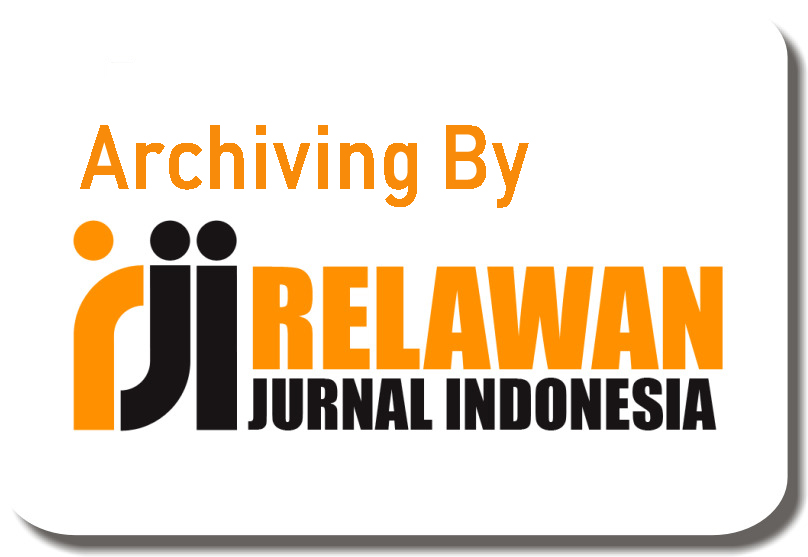The Islamic Method in the Qur’an: Keeping Life in Equilibrium
Abstract
The Qur'an as a guide to life for Muslims contains various methods in maintaining the balance of life, both in spiritual, social and moral aspects. This research examines the Islamic methods contained in the Qur'an in shaping the balance of life through an educational approach and moral development. Using conceptual analysis and a qualitative approach, this study identifies several main methods taught in the Qur'an, namely modeling, reward and punishment, reflection, experiential learning, and trial and error equilibrium. The results show that these methods not only shape individual character but also create harmony in social and spiritual life. The implications of this research contribute to the development of Islamic values-based educational strategies that can be applied in various contexts, including formal and non-formal education.
Keywords
Full Text:
PDFReferences
Aini, S. N. (2025). A Comparison of Traditional and Modern Qur’anic Teaching Methods in Islamic Education. Journal of Noesantara Islamic Studies, 2(1), 23–32. https://doi.org/10.70177/jnis.v2i1.1843
Akbar, R., & Jasiah, J. (2025). Pengaruh Model Pembelajaran Experiential Learning Terhadap Keterampilan Berpikir Kritis Siswa Pada Mata Pelajaran Sejarah Kebudayaan Islam. Journal Sains Student Research, 3(1), 496–503. https://doi.org/10.61722/jssr.v3i1.3578
Aldi, M., & Kawakib, A. N. (2025). Reconstruction of Islamic Education Philosophy in Minangkabau Customary Values: Actualizing the Principles of Adat Basandi Syarak, Syarak Basandi Kitabullah. JIIP-Jurnal Ilmiah Ilmu Pendidikan, 8(2), 1548–1557. https://doi.org/10.54371/jiip.v8i2.6902
Aldi, M., & Khairanis, R. (2024). The Synergy of Religion and Malay Culture in Improving the Empowerment of Islamic Communities Towards Achieving SDGS. PERADA, 7(2). https://doi.org/10.35961/perada.v7i2.1758
Aldi, M., & Toriquddin, M. (2025). History of Thought Syuhudi Ismail: A Study of Textual and Contextual Analysis of Prophetic Hadiths. J-CEKI: Jurnal Cendekia Ilmiah, 4(2), 1723–1732. https://doi.org/10.56799/jceki.v4i2.7141
Annashir, A., Ginting, M. A. B., & Ar-Rasyid, H. (2025). Balaghah dalam Al-Qur’an: Analisis Al-Mubalaghah dalam Surah Al Hasyr Ayat 1-2. Reflection: Islamic Education Journal, 2(2), 112–118. https://doi.org/10.61132/reflection.v2i2.661
Aufaqurrizqi, F., & Thobroni, A. Y. (2025). Exploring The Historical Context Of The Qur’an. Al-Risalah: Jurnal Studi Agama Dan Pemikiran Islam, 16(1), 141–154. https://doi.org/10.34005/alrisalah.v16i1.4375
Aziz, M., Napitupulu, D. S., & Sagala, N. A. (2025). Implementation of the use of the tsawab (reward) and iqab (punishment) methods in improving the ability to learn tahfizhul qur’an. Jurnal ilmiah didaktika: Media Ilmiah Pendidikan Dan Pengajaran, 25(2), 188–201. http://dx.doi.org/10.22373/jid.v25i2.25854
Hamid, A. H. S., & Imamuddin, M. (2025). Scientific and social methods of interpretation of the Qur’an Alkarim. Journal of Education and Teacher Training Innovation, 2(2), 132–143. https://doi.org/10.61227/jetti.v2i2.113
Hazaa, Z. M., Tumangger, M., Faisal, A., & Gunawan, I. (2025). Ta’lim Management Through the Integration of Verses 30-35 Surah of Al-Baqarah and Hadith: A Historical and Textual Analysis. Journal of Islamic Education Research, 6(1), 49–68. https://doi.org/10.35719/jier.v6i1.454
Holil, M. (2025). Metode nabi dan sahabat dalam menyampaikan dan memelihara hadis. Amsal Al-Qur’an: Jurnal Al-Qur’an Dan Hadis, 2(1), 106–125. https://doi.org/10.63424/amsal.v2i1.173
Hollstein, B. (2011). Qualitative approaches. The SAGE Handbook of Social Network Analysis, 1(01), 404–416. https://books.google.co.id/books?hl=id&lr=&id=mWlsKkIuFNgC&oi=fnd&pg=PA404&dq=Hollstein,+B.+(2011).+Qualitative+approaches.+The+SAGE+Handbook+of+Social+Network+Analysis,+1(01),+404%E2%80%93416.&ots=tScC4TiZ0k&sig=WetcD9G1-bo1hCZAM1B-aHY1two&redir_esc=y#v=onepage&q&f=false
Ibragimovna, S. D. (2025). The place and importance of music in social life. International Journal of Pedagogics, 5(03), 91–93. https://doi.org/10.37547/ijp/Volume05Issue03-26
Irwanto, I., Al Faruq, A. Q., Isyak, I., & Thobroni, A. Y. (2025). Urgency of semantics and science approach for qur’anic research as islamization study. Al-Risalah: Jurnal Studi Agama Dan Pemikiran Islam, 16(1), 75–89. https://doi.org/10.34005/alrisalah.v16i1.4373
Lupiah, K., Muis, A. A., & Sugiharto, S. (2025). Learning Methods in the Perspective of the Qur’an and Hadith. International Journal of Health, Economics, and Social Sciences (IJHESS), 7(2), 614–619. https://doi.org/10.56338/ijhess.v7i2.5554
Meliasani, R. A., & Nugroho, K. (2025). The Meaning of Shaffa in the Qur’an: Semantic Analysis Based on Toshihiko Izutsu’s Thought. Al-Afkar, Journal For Islamic Studies, 8(1), 845–864. https://doi.org/10.31943/afkarjournal.v8i1.2120
Mustapa, M., Suardi, I., & bin Kirin, A. (2025). Religious Moderation and Interfaith Harmony in Maqashid Sharia: An Analytical Study of Quranic Hermeneutics. Jurisprudensi: Jurnal Ilmu Syariah, Perundang-Undangan Dan Ekonomi Islam, 17(1), 15–31. https://doi.org/10.32505/jurisprudensi.v17i1.9112
Qodir, A., & Asrori, M. (2025). Epistemologi Pendidikan Qur’ani: Telaah terhadap Konsep Ta’lim, Tarbiyah, dan Ta’dib dalam Al-Quran. Peradaban Journal of Interdisciplinary Educational Research, 3(1), 1–16. https://doi.org/10.59001/pjier.v3i1.298
Roy, D., Das, D., Islam, K., & Billah, A. M. (2025). Machine learning assisted axial strength prediction models for concrete filled stainless steel tubular columns. 73, 108329. https://doi.org/10.1016/j.istruc.2025.108329
Syaifuddin, M., Zahra, A. M., & Rohmah, N. (2025). Tafsir Alquran Sebagai Sumber Inspirasi Dalam Pengembangan Metode Pembelajaran Islam. QOSIM: Jurnal Pendidikan, Sosial & Humaniora, 3(1), 43–50. https://doi.org/10.61104/jq.v3i1.642
Ulfah, Y. F., Abbas, N., Setiawan, A., Yasin, Z. A., & Sholehuddin, Y. (2025). The Character of Semar in Wayang: A Synthesis of Javanese Cultural Philosophy and Islamic Principles. JUSPI (Jurnal Sejarah Peradaban Islam), 8(2), 396–404. http://dx.doi.org/10.30829/juspi.v8i2.21630
DOI: https://doi.org/10.31004/jele.v10i2.805
Refbacks
- There are currently no refbacks.
Copyright (c) 2025 Muhammad Aldi, Esa Nur Wahyuni

This work is licensed under a Creative Commons Attribution-ShareAlike 4.0 International License.



